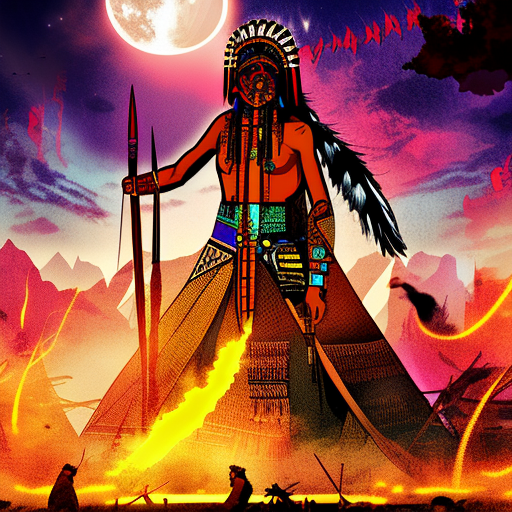Summary:
Empire of the Summer Moon is a captivating historical account that delves into the rise and fall of the Comanche tribe, focusing on the life of Quanah Parker, the last great Comanche chief. S.C. Gwynne’s narrative explores the complex relationship between the Comanches and the settlers, shedding light on the brutal conflicts, cultural clashes, and the eventual decline of the Comanche empire. Through meticulous research and vivid storytelling, Gwynne paints a vivid picture of the Comanche way of life, their resilience, and the impact they had on shaping the history of the American West.
The Rise of the Comanches:
Gwynne begins by tracing the origins of the Comanches, a nomadic tribe that emerged from the Shoshone people and became one of the most formidable forces in the American West. He explores their mastery of horsemanship, their hunting techniques, and their adaptation to the harsh environment of the Great Plains. The Comanches’ ability to traverse vast distances on horseback and their strategic use of guerrilla warfare made them a formidable opponent for both Native American tribes and European settlers.
The Clash of Cultures:
As European settlers began to encroach upon Comanche territory, tensions escalated, leading to violent clashes and a battle for control of the land. Gwynne vividly portrays the brutal nature of these conflicts, highlighting the Comanches’ fierce resistance against the encroachment of their lands. The book delves into the infamous Comanche raids, their capture and assimilation of captives, and the devastating impact of these raids on the settlers. Gwynne also explores the complex dynamics between the Comanches and other Native American tribes, such as the Apache and the Kiowa, as they navigated alliances and rivalries in the face of the growing threat from the settlers.
The Fall of the Comanche Empire:
Gwynne chronicles the decline of the Comanche empire, as the United States government intensified its efforts to subdue and control the Native American tribes. The book explores the pivotal role of Quanah Parker, the son of a Comanche chief and a captive white woman, who emerged as a key figure in the negotiations between the Comanches and the U.S. government. Gwynne also examines the devastating impact of disease, the depletion of buffalo herds, and the forced relocation of the Comanches to reservations, which ultimately led to the disintegration of their once-powerful empire.
Key Takeaways:
- The Comanches were a formidable force in the American West, known for their mastery of horsemanship and guerrilla warfare.
- The clashes between the Comanches and settlers were marked by brutal violence and cultural clashes.
- Quanah Parker played a significant role in the negotiations between the Comanches and the U.S. government.
- The decline of the Comanche empire was influenced by disease, depletion of resources, and forced relocation.
“The Comanches were the lords of the Southern Plains, the greatest horsemen the world had ever seen.”
In Empire of the Summer Moon, S.C. Gwynne provides a captivating and comprehensive account of the rise and fall of the Comanches, shedding light on their rich culture, their fierce resistance against settlers, and the eventual decline of their empire. Through meticulous research and engaging storytelling, Gwynne brings to life the complex history of the American West and the lasting impact of the Comanche tribe.












